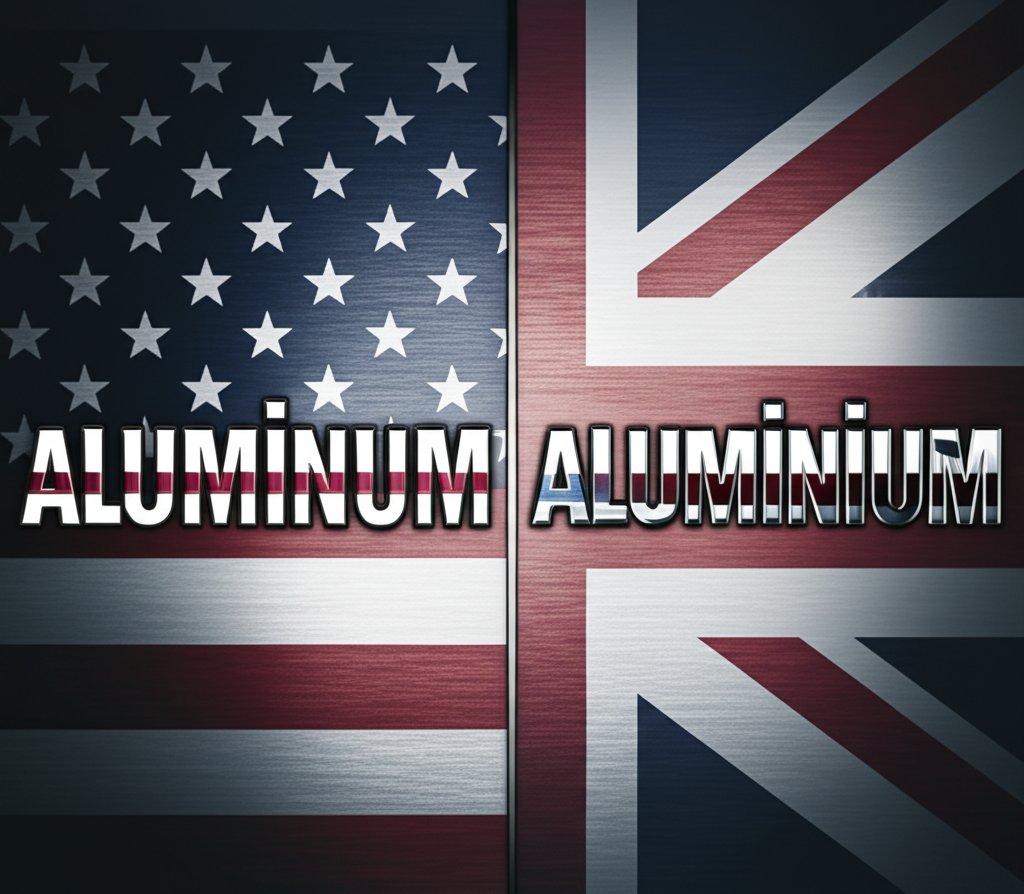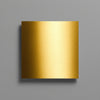Aluminum or Aluminium: 8 Essential Points For Faster Decisions

Aluminum or aluminium fundamentals made simple
Ever wondered why you see both "aluminum" and "aluminium" when reading about metals, packaging, or technical standards? Sounds complex, but the answer is simpler than you might think. Both words refer to the same chemical element—symbol Al, atomic number 13—used in everything from soda cans and airplanes to building facades and kitchen foil. If you are searching for what is aluminum, or asking is aluminium a metal, you are in the right place: they are two spellings for the same versatile, lightweight metal found around the world.
Aluminum vs Aluminium at a glance
Here’s the quick breakdown: "aluminum" is the standard spelling in American and Canadian English, while "aluminium" is preferred in British English and most other regions. You’ll notice both forms in science, engineering, and everyday language, but the underlying element—whether you call it aluminum or aluminium—is always the same. For those curious, is aluminum an element? Yes, it is a metal element recognized on the periodic table as Al.
- Pronunciation guidance for both spellings
- Style guide recommendations by region and publication type
- Decision matrix for choosing the right form for your audience or brand
- Technical note for engineers and spec writers on using the correct notation
- Real-world examples from packaging, ecommerce, and documentation
- Editorial checklist and ready-to-use rules for teams
Both spellings refer to the same element; choose the form that matches your audience and style guide.
Why two spellings exist
Many readers come here with different goals. Maybe you want to know the difference for a technical report, or you are writing for a global brand and need to localize product pages. Others may simply wonder about pronunciation or the history behind the two spellings. No matter your intent, understanding aluminum vs aluminium helps you communicate clearly and confidently in any context.
How to use this guide
This guide is structured to help you scan quickly and find exactly what you need. Each section is anchored by clear headings—so whether you are looking for aluminium vs aluminum usage in technical standards, or you want a style-guide roundup for editorial work, you can jump right to the relevant advice. Tables, lists, and blockquotes are used throughout to keep information organized and actionable. We remain editorially neutral: our goal is to empower your decision, not to prescribe a single "correct" answer.
Ready to make faster, more confident choices about aluminum or aluminium? Let’s dive in, starting with the history behind the names, and moving step by step through pronunciation, technical notes, and practical decision tools for every type of writer or editor.

How the two spellings evolved and spread
When you first see "aluminum" and "aluminium" side by side, it’s natural to wonder: why do we have two spellings for the same element? And does it matter which one you use? The answer lies in a fascinating story of language, science, and regional preference—one that has nothing to do with the metal’s properties, and everything to do with how words travel and stick.
Origins of the element’s name
Let’s start with who discovered the element aluminium and how did the element aluminum get its name. The journey began with British chemist Sir Humphry Davy, who first proposed the element in the early 1800s. Davy initially coined the name "alumium" based on "alumina"—a term for its oxide form. However, he didn’t settle there. Soon after, he revised the name to "aluminum." Around the same time, other scientists proposed "aluminium," aligning it with the Latin-sounding names of other elements like sodium and potassium. This early debate set the stage for a century of dual usage.
For those curious about where does aluminium come from, it’s worth noting that the element is not found in its pure metallic form in nature but is extracted from compounds in rocks and minerals. The naming, however, was shaped entirely by linguistic and academic trends, not by the origin or properties of the metal itself.
- "Alumium" is proposed: Sir Humphry Davy coined the name 'alumium' for the element he theorized existed within alumina, although he was never able to successfully isolate it himself. (Merriam-Webster).
- "Aluminum" enters the scene: Davy shifts to "aluminum," favoring a simpler form.
- "Aluminium" gains traction: Other scientists and writers, seeking consistency with names like "sodium," promote "aluminium."
- Both spellings in use: Throughout the 1800s, "aluminum" and "aluminium" are used interchangeably in scientific and popular literature.
- Regional preferences solidify: By the early 1900s, "aluminum" becomes standard in the United States, while "aluminium" is favored in the UK and Commonwealth countries (Dictionary.com).
- Official adoption: The American Chemical Society formally adopts "aluminum" in 1925. International bodies like IUPAC accept "aluminium" as the global standard in 1990, but both remain correct in context.
How dictionaries normalized usage
Imagine you’re writing for a global audience and want to know how to spell aluminium or aluminum for your readers. Dictionaries played a huge role in this story. Early American dictionaries, like Noah Webster’s, initially defined "aluminium" as the base for alumina, but by the early 20th century, both forms were listed with notes about their regional usage. Later editions and scientific organizations cemented the split: "aluminum" for the U.S. and "aluminium" for the UK. Today, style guides and dictionaries recommend following local norms, but recognize both spellings as valid.
"The form aluminum is in common use in the United States; the form aluminium is used in Great Britain and by some chemists in the United States."
Why spelling diverged between regions
The divergence is a classic case of language adapting to local preference, not scientific necessity. The British spelling of aluminum, "aluminium," fits a pattern with other element names, while American spelling aluminium simply reflects Davy’s revised version. This split became entrenched as scientific communities and industries formalized their standards and dictionaries reflected real-world use. Today, you’ll see both spellings in international literature, technical papers, and product labels.
- Prefer the local spelling in journalism, marketing, and product copy.
- Follow technical standards or regulatory guidance for engineering documents.
- Be ready to see both forms in research, patents, and global communications.
- Remember: "alum vs aluminium" is a spelling question, not a chemical one.
Ultimately, understanding this history helps you make informed choices—whether you’re navigating how to spell aluminium in a technical spec, or simply curious about the background of the terms. Up next, you’ll get practical tips for pronunciation and style guide alignment, so you can match your language to your audience with confidence.
Pronunciation tips and style guide roundup
Ever been in a meeting where someone says "aluminum" and someone else says "aluminium"—and both sound sure they’re right? You are not alone. The pronunciation of aluminum and aluminium is one of the most common sources of confusion for editors, technical writers, and anyone working in global teams. Getting it right is not just about sounding correct; it’s about matching your language to your audience, your style guide, and your project’s goals.
Pronouncing aluminum and aluminium
How to pronounce aluminum? It depends on your region and the spelling you choose. Here’s a quick guide to the most widely accepted pronunciations, based on authoritative sources (Wiktionary):
- Aluminum (US): /əˈluːmɪnəm/ — Sounds like "uh-LOO-min-um"
- Aluminium (UK): /ˌæljuːˈmɪniəm/ — Sounds like "al-yoo-MIN-ee-um"
In American and Canadian English, the three-syllable form "aluminum" is standard, while in British, Australian, and most Commonwealth English, the five-syllable "aluminium" is the norm. If you’re curious about aluminum pronunciation UK style, you’ll sometimes hear the British pronunciation of aluminum as /ˌæljuːˈmɪniəm/, even when the US spelling is used. The key takeaway: always match pronunciation to the spelling and the audience you are addressing.
Style guide positions at a glance
For editors and writers, consistency is everything. Most major style guides provide clear guidance on which spelling—and therefore which pronunciation—to use, based on your target locale. The table below summarizes the recommendations from leading style authorities and scientific bodies:
| Style Guide / Body | Region | Preferred Spelling | Notes |
|---|---|---|---|
| APA Publication Manual | US / International | Aluminum | Requires "aluminum" except when quoting sources |
| Chicago Manual of Style | US / UK | Follow locale | Use "aluminum" for US, "aluminium" for UK |
| Oxford Style Manual | UK / Commonwealth | Aluminium | "Aluminium" is standard in British English |
| ACS (American Chemical Society) | US | Aluminum | Scientific publications in the US use "aluminum" |
| IUPAC (International Union of Pure and Applied Chemistry) | Global | Aluminium | "Aluminium" is the international standard spelling |
So, if you are writing a scientific paper for a US journal, stick with "aluminum." Preparing documentation for a UK audience? "Aluminium" is your go-to. When in doubt, check your institution’s or publisher’s style sheet for a definitive answer.
Spelling variants in academic and media contexts
Academic and media outlets generally follow the spelling and pronunciation norms of their region. For example, US-based publications like the APA journals or the New York Times use "aluminum" throughout, while UK-based outlets such as the BBC or Nature consistently use "aluminium." If you are unsure, consult the publication’s editorial guidelines or refer to the most recent articles for reference.
The pronunciation of aluminium and aluminum follows these same patterns. For instance, in the US, "aluminum pronunciation" is always /əˈluːmɪnəm/, while the "aluminium pronunciation" in the UK is /ˌæljuːˈmɪniəm/. If you’re editing for a global brand, it’s smart to set a rule at the start of your project and document it in your style guide.
Tip: Match spelling and pronunciation to the audience and publication style, and keep them consistent within a document.
In summary, whether you’re wondering how to pronounce aluminum, or you want to ensure the pronunciation of aluminium is correct for your audience, the answer is always context-driven. Consistency is key. Up next, we’ll dive into the technical details engineers and spec writers need to know—so you can be confident that your choice of spelling and pronunciation aligns with both your audience and your technical requirements.

Technical Note for Engineers and Spec Writers
When you’re drafting an engineering drawing or reviewing a bill of materials, you might pause and wonder: does it matter if you write aluminum or aluminium? Sounds like a small detail, but in technical communication, clarity and consistency are everything. Let’s break down what engineers, spec writers, and procurement teams need to know—so you can move from question to confident decision in seconds.
Same Element, Different Spelling
Whether your document says aluminum or aluminium, both terms refer to the same chemical element: atomic number 13, symbol Al. You’ll see both spellings in international standards, but the meaning is identical. If you’re ever asked, “Is aluminum an element?”—the answer is yes, and it’s the same as aluminium. The only difference is regional spelling, not substance or function. In technical specs, always use the symbol Al for unambiguous identification.
Notations You Will See in Specs
Technical documents rely on standardized abbreviations and notations for clarity. Here’s a quick table to help you decode what you’ll see on drawings, datasheets, and bills of materials:
| Property or Notation | Why It Matters |
|---|---|
| Symbol: Al | Universal identifier in all technical contexts—removes ambiguity regardless of spelling. |
| Abbreviation for aluminum or aluminium abbreviation: Al, AL | Common on engineering drawings and parts lists; ensures correct material selection. |
| Alloy Designation (e.g., 6061, 5083) | Specifies the exact composition and mechanical properties; alloy numbers are consistent globally. |
| Temper Codes (e.g., T6, H32) | Defines heat treatment or work hardening—critical for strength and performance. |
| Oxide Layer (Al2O3) | Explains corrosion resistance—important for design in harsh environments. |
For example, the abbreviation for aluminum (or aluminium abbreviation) is almost always Al or AL in technical documentation. Alloy numbers and tempers, like 6061-T6, remain the same in both US and UK standards, even if the spelling in the text differs.
Properties That Matter in Design
Imagine you’re specifying material for a lightweight structure, or comparing datasheets for different suppliers. What technical properties should you focus on? Here are the essentials, with all values based on reference data:
| Property | Design Relevance |
|---|---|
| Aluminum melting point (aluminum melting temperature): 660.3°C | Key for welding, casting, and heat treatment processes. |
| Aluminum molar mass: ~26.98 g/mol | Important for chemical calculations and material balances. |
| Charge of aluminum: +3 | Determines chemical reactivity and alloying behavior. |
| Specific heat of aluminum: High (nearly double that of steel) | Influences thermal management in design—ideal for heat exchangers and electronics. |
| Corrosion Resistance (via oxide layer) | Enables use in outdoor, marine, and food-contact applications. |
Keep in mind: these properties do not change with spelling. Whether you’re referencing aluminum melting temperature or aluminum molar mass, the underlying science is constant.
- Always write the symbol as Al, regardless of spelling choice.
- Align the spelling (aluminum or aluminium) with your document’s locale or client preference.
- Keep alloy designations and temper codes exact—never translate or alter them.
- Note that the oxide layer (Al2O3) provides corrosion resistance, a critical advantage over many other metals.
In technical documents, clarity and consistency outweigh regional spelling preferences.
Up next, we’ll show you how to use a practical decision matrix to choose the right spelling in any context—making your editorial and technical workflows smoother than ever.
Decision Matrix for Which Spelling to Use
When you’re faced with the classic aluminum versus aluminium dilemma, it’s easy to get stuck—especially if you’re editing for an international audience or managing brand language across regions. Imagine you’re preparing a press release, a scientific paper, or an e-commerce listing. Which spelling should you use? Here’s a practical approach to make the right call, every time.
Audience and Locale First
The first step is always to consider your audience and their location. The difference between aluminum and aluminium is primarily regional. In American and Canadian English, "aluminum" is standard, while "aluminium" is used in British English and most other English-speaking regions (QuillBot). If you’re writing for a global brand, you’ll need to decide which audience takes priority—or whether to localize content for each market.
- Identify the target locale: Who will read or use this document? Is it for the US, UK, Canada, Australia, or a multinational audience?
- Check your style guide: Does your organization or client have a preferred spelling? (For example, the APA Manual requires aluminum American spelling, while many UK institutions require aluminium.)
- Assess the domain: Is this a technical spec, a legal contract, marketing copy, or a regulatory filing?
- Select the spelling: Choose the form that matches both the locale and the document’s purpose.
- Document your rule: State your spelling choice at the start of the document or in your project style sheet.
- QA before publication: Review for consistency—no mix-and-match spelling in the same document.
Document Purpose and Risk
Now, let’s break it down by context. The difference between aluminum and aluminium isn’t just about language—it’s about clarity, compliance, and brand trust. For example, using aluminum in British government paperwork may cause confusion or even compliance issues, while using aluminium in US marketing could signal a lack of localization. The table below summarizes best practices for a range of scenarios:
| Context | Preferred Form | Rationale | Notes |
|---|---|---|---|
| US Marketing, Journalism, Product Copy | Aluminum | Matches audience expectation; aligns with aluminum American spelling | Check for US-based style guide requirements |
| UK, Commonwealth, or EU Marketing/Media | Aluminium | Aligns with local norms; avoids confusion | Aluminum in British contexts is rare, but recognized as a variant |
| Academic Publishing (US) | Aluminum | APA, ACS, and Chicago recommend US spelling | Use aluminum throughout unless quoting a source |
| Academic Publishing (UK/Commonwealth) | Aluminium | Follows British spelling conventions; aligns with publisher expectations | Aluminium American spelling is not standard in UK journals |
| Engineering Specifications (US) | Aluminum | Matches ANSI, AWS, and Aluminum Association standards | Use symbol Al in all technical references |
| Engineering Specifications (International/UK) | Aluminium | Aligns with ISO and BSI standards | Document the choice at the top of the spec |
| Regulatory Filings (per region) | Local Standard | Ensures compliance with local laws and agencies | Check for required spelling in legal templates |
| Global Brand/UX Copy | Choose one or localize | Consistency across all touchpoints; avoids user confusion | Consider maintaining a master style guide for all locales |
Consistency and Governance
Consistency is key, no matter which form you choose. Mixing aluminum and aluminium (or vice versa) within the same document, website, or product line can erode trust and confuse your audience. Once you’ve chosen your spelling, document it in your internal style guide and enforce it during quality assurance. Here are some copy-ready policy lines you can paste directly into your editorial workflow:
- "Use 'aluminum' for all US and Canadian-facing content; use 'aluminium' for UK, EU, and Commonwealth audiences."
- "Maintain a single spelling throughout each document or product line."
- "Follow the spelling required by the target region’s style guide or regulatory authority."
- "For multinational documents, state the chosen spelling at the beginning and apply consistently."
- "Technical documents must use the chemical symbol 'Al' regardless of spelling preference."
Choose the spelling that fits your audience and document purpose—then stick to it, everywhere it appears.
By following this matrix, you’ll resolve the aluminium versus aluminum debate quickly and confidently. Next, let’s see how these choices play out in real-world product names, packaging, and engineering documentation—so your decision flows all the way from policy to production.

Real World Usage Across Products and Parts
When you browse product catalogs, scan e-commerce listings, or review engineering drawings, you’ll notice that the spelling—aluminum or aluminium—often matches the brand’s locale and the product’s intended market. But it’s not just about the name. The terms you choose for derivatives like aluminum sheet, aluminum plate, or aluminum channel can impact everything from customer experience to compliance. So, how do you keep it all consistent and clear?
Product Naming and Labels
Imagine you’re shopping for building supplies, electronics, or industrial equipment. You might see “aluminum sheet metal” on a US website or “aluminium tube” on a UK supplier’s page. This isn’t just a language quirk—it’s a deliberate choice that helps customers find the right product and reassures them about its origin and compliance. In industries where durability and traceability matter, aluminum labels are especially common. They’re not just for show: these labels withstand harsh environments, resist fading and abrasion, and maintain legibility for years—making them a top pick for warehouses, factories, and even military applications.
Derivatives to Standardize
Sounds complex? It gets easier when you standardize terms across your documentation, packaging, and online listings. Here’s a practical list of terms you’ll encounter—and should keep consistent within your brand or product line:
- Aluminum/aluminium sheet
- Aluminum/aluminium sheet metal
- Aluminum/aluminium plate
- Aluminum/aluminium channel
- Aluminum/aluminium foil
- Aluminum powder
- Aluminum sulfide
- Aluminium tube
For example, if your datasheet uses “aluminum plate” in one section and “aluminium plate” in another, it can confuse customers and trigger support tickets—especially in global markets. Standardizing these product names, as well as their derivatives, ensures that your product pages, datasheets, and CAD exports all tell the same story, no matter where they’re read.
Consistency across product pages, datasheets, and CAD exports reduces customer confusion and support tickets.
From Consumer Goods to Industrial Parts
So where do these terms show up in the real world? Everywhere—from the kitchen to the construction site. Here’s a quick reference table mapping common aluminum or aluminium derivatives to their typical usage domains:
| Term Family | Typical Usage Domain |
|---|---|
| Foil | Consumer goods (food wrap, packaging), laboratories |
| Sheet / Sheet Metal | Fabrication, industrial equipment, signage, automotive panels |
| Plate | Structural components, heavy machinery, marine and aerospace |
| Channel | Construction framing, architectural trim, electronics housings |
| Powder | Metallurgy, 3D printing, coatings, pyrotechnics |
| Sulfide | Chemical manufacturing, laboratory reagents |
| Tube | Plumbing, HVAC, automotive, bicycle frames |
For instance, aluminum powder is widely used in additive manufacturing and coatings, while aluminum sulfide finds its place in chemical labs. The term "aluminium tube" is common in plumbing and industrial supply catalogs, especially in British and Commonwealth markets.
Whether you’re labeling a part, creating a new product listing, or exporting a CAD file, aligning your terminology is essential for clarity and professionalism. Next, let’s explore what to look for when selecting a fabricator for aluminum or aluminium parts—so your choices flow seamlessly from language to production.
Selecting a Fabricator for Aluminum or Aluminium Parts
When you need to turn a design into reality—whether it’s alu sheets for an enclosure, cast aluminum brackets, or custom aluminum sheets for a new product—choosing the right fabrication partner can make all the difference. The process might seem overwhelming at first. How do you know which vendor will deliver the quality, finishes, and speed you need, all while staying within budget?
What to Look for in a Fabricator
Start by asking: does the fabricator have the experience, technology, and certifications for your specific project? Here are the essentials to consider:
- Material expertise: Can they handle a variety of alloys, from 5052 and 6061 to 7075, and offer both alu sheets and cast aluminum parts?
- Modern equipment: Look for capabilities like CNC laser cutting, precision bending, and advanced welding—these ensure tight tolerances and consistent results.
- In-house finishing: Do they offer anodizing, powder coating, or chromating for durability and appearance?
- Quality assurance: Certifications like ISO 9001 show a commitment to process control and customer satisfaction.
- Capacity and lead time: Can they handle both prototypes and production runs? Are lead times fast enough to meet your deadlines?
- Transparent quoting: A clear quote should break down all costs, from material (including aluminum price per pound) to labor and finishing.
Processes That Affect Outcomes
Imagine your project needs precise aluminum sheets for an electronics housing, or custom-formed alu sheets for architectural panels. The right processes—and the expertise behind them—are crucial for success. Here’s what to check:
- Cutting: Laser cutting or CNC punching provides clean, accurate edges for complex shapes.
- Bending: Modern press brakes create sharp, consistent bends—even in thicker alu sheets.
- Welding: Aluminum welding requires specialized skill and equipment, as the metal’s high thermal conductivity and oxide layer can complicate the process.
- Finishing: Anodizing and powder coating protect against corrosion and allow for a range of colors and textures.
Quality Systems and Finishes
Quality is more than just a buzzword—it’s a system. Look for fabricators who document their processes, train their teams, and regularly review procedures for improvement. ISO 9001 certification is a strong indicator of a robust quality management system. In addition, ensure your fabricator can provide finishing options in-house, reducing handoffs and keeping quality control tight.
| Provider | Materials Handled | Processes | Finishes | Lead Time | Certifications | Capacity |
|---|---|---|---|---|---|---|
| Sheet metal fabrication services | Aluminum (alu sheets, cast aluminum), steel, stainless steel | Laser cutting, bending, welding | Anodizing, powder coating | As fast as 3 days | ISO 9001 | Prototype to production |
| Approved Sheet Metal | Aluminum (5052, 6061, 7075), steel | Laser cutting, bending, welding | Anodizing, chromating | Varies | – | Prototype to low volume |
| Austgen | Aluminum, steel | CNC cutting, welding, bending, assembly | Painting, powder coating, anodizing | Varies | – | Prototype to production |
| Northstar Metal | Steel, aluminum | Laser cutting, welding, assembly | Powder coating (UL 1332) | Varies | ISO 9001, UL 1332 | Prototype to production |
For teams needing rapid turnaround, high-precision alu sheets, or assemblies made from aluminum or aluminium, cnc machining services from XTJ stands out with ISO 9001 quality assurance, advanced fabrication processes, and the ability to deliver both prototypes and full production runs in as little as three days.
The right fabricator combines proven expertise, modern technology, and robust quality systems—ensuring your aluminum or aluminium parts meet every expectation, from finish to fit.
By evaluating capabilities, finishes, certifications, and lead times, you’ll find a partner who can handle everything from alu sheets to complex assemblies—helping you move from decision to delivery with confidence. Next, we’ll wrap up with an editorial checklist and actionable next steps to ensure your spelling, terminology, and production workflows stay perfectly aligned.
Editorial Checklist and Next Steps for Teams
Is it aluminum or aluminium? If you have ever paused mid-sentence, double-checked a label, or debated the aluminum British spelling with a colleague, you know how easily this detail can trip up even experienced teams. Sounds complex? It does not have to be. With a clear editorial workflow and a few copy-ready rules, you can eliminate confusion and keep your content, product documentation, and production lines consistent—no matter where your audience is.
Copy-Ready Rules You Can Paste
- Select your locale: Decide if your primary audience is in the US, UK, or another region. For US and Canada, use "aluminum"; for the UK, Australia, and most of the world, use "aluminium." If you are unsure, check your style guide or ask your client.
- Align with your style guide: Confirm the required spelling in your organization’s or client’s editorial standards. APA, ACS, and most US guides require "aluminum," while British and international guides prefer "aluminium." Document your choice at the start of each project.
- Approve the spelling: Once chosen, use the same spelling throughout the document, website, or product line. No switching between aluminum and aluminium—or vice versa—within the same context.
- Add pronunciation notes: For teams producing audio, video, or training content, include a quick guide on how to say aluminium or aluminum. For US: "uh-LOO-min-um"; for UK: "al-yoo-MIN-ee-um." This helps avoid on-air or in-person inconsistencies.
- Standardize derivatives: Make a list of related terms—foil, sheet, plate, channel, tube—and ensure you use the same base spelling everywhere. For example, if you choose aluminum, also use aluminum sheet, aluminum plate, and so on. This reduces customer confusion and support tickets.
- Preflight before publish: Run a final check for spelling consistency, especially if you are merging content from multiple sources or contributors. Use search-and-replace tools or style guide checkers to catch errors before they go live.
Set the spelling once, document it, and enforce it at review—confusion disappears.
Consistency and QA Before Publish
Imagine launching a new product page or technical manual, only to get feedback about mixed spellings. Consistency is not just about professionalism—it is about building trust. Whether you are handling aluminum in UK product descriptions or referencing the aluminium British standard in engineering specs, following a single rule saves time and prevents errors. If you ever wonder how to tell if something is aluminum or aluminium in your content, check your locale decision and apply your documented rule every time.
Next Steps for Teams
Once your editorial policy is set, it is time to move from words to action. If your next project involves producing real parts—like custom sheet metal in aluminum or aluminium—make sure your spelling policy flows into your procurement and production documentation. For teams ready to turn their standards into finished products,XTJ's cnc machining services provides high-precision custom sheet metal parts in either spelling, with ISO 9001 quality assurance and rapid lead times.
- Update your internal style guide or editorial policy with your chosen spelling and derivatives
- Localize product pages and datasheets to match your target market’s expectations (e.g., aluminum in US, aluminium in UK)
- Request a quote for aluminum or aluminium sheet metal parts to ensure your documentation and production stay in sync
Still unsure how to say aluminium for your audience, or need help aligning your terminology across teams? Use this checklist as your go-to reference, and revisit it whenever you launch a new project or enter a new market. By following these steps, you will never have to wonder "aluminum or aluminum" again—and your team will always deliver clear, consistent, and professional results.
Frequently Asked Questions
1. Why did Americans change the spelling of aluminium?
The American spelling "aluminum" originated when early US dictionaries, like Webster's, adopted it for consistency and simplicity. Over time, American scientific organizations and publishers reinforced this version, while British English kept "aluminium" to match other element names ending in -ium.
2. Is aluminum or aluminium preferred in the US?
In the US, "aluminum" is the standard spelling used in science, engineering, and everyday language. Major style guides and organizations, such as the AP Stylebook and American Chemical Society, officially recommend "aluminum" for all American audiences and publications.
3. What is the difference between aluminum and aluminium?
There is no difference in the material itself—both "aluminum" and "aluminium" refer to the same chemical element with the symbol Al. The distinction is purely regional, with "aluminum" used in American and Canadian English, and "aluminium" preferred in British, Commonwealth, and most international contexts.
4. How should I choose between aluminum and aluminium in my documents?
Select the spelling that matches your audience's region and your organization's style guide. Be consistent throughout your document or website. For global brands, consider localizing spelling for each market or clearly stating your choice at the start of the document. Consistency avoids confusion and maintains professionalism.
5. What should I look for when selecting a fabricator for aluminum or aluminium parts?
Look for a fabricator with experience in your required material, advanced processes like laser cutting and welding, finishing options such as anodizing or powder coating, ISO 9001 certification, and the ability to handle both prototypes and production runs. For rapid, high-precision aluminum or aluminium parts, services like SHEET METAL FABRICATION SERVICES offer fast lead times and quality assurance.
-
Posted in
aluminum vs aluminium, fabrication tips, spelling and pronunciation, style guide advice, technical standards





